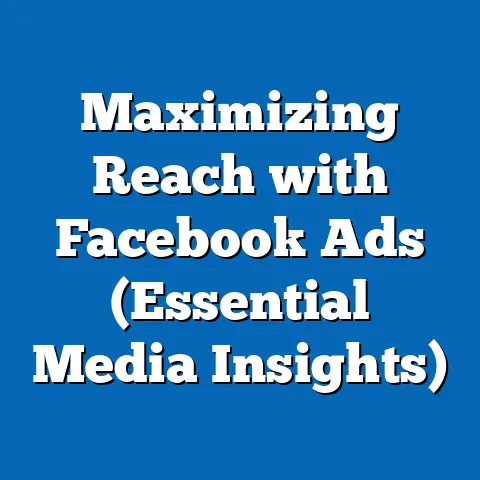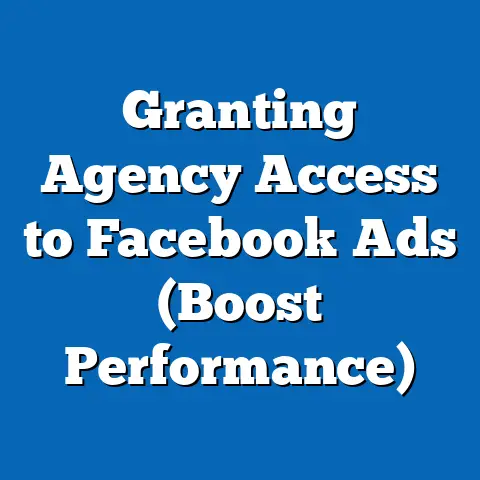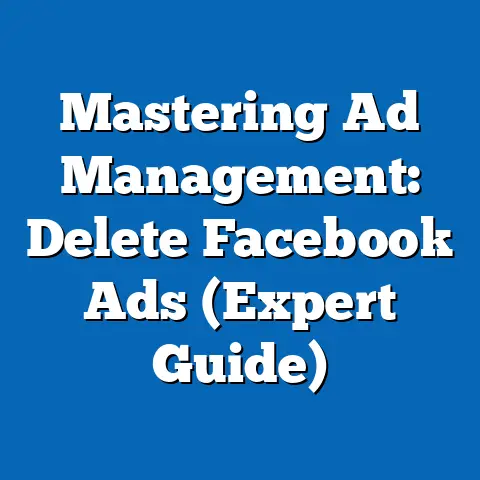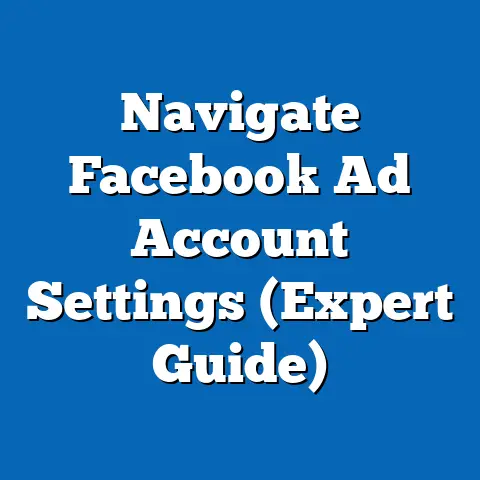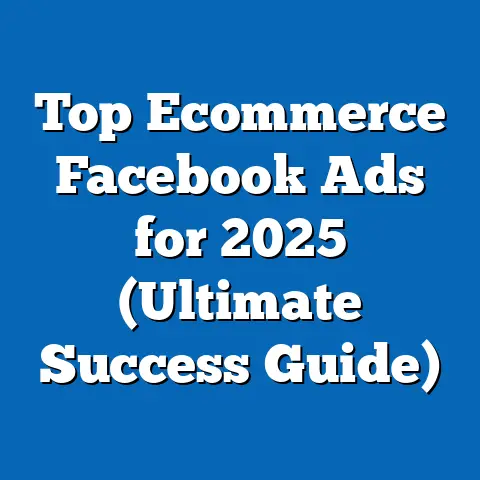Seamlessly Link Facebook Lead Ads to Google Sheets (Game-Changer)
The integration of Facebook Lead Ads with Google Sheets has emerged as a transformative tool for digital marketers, streamlining lead management and data analysis in an increasingly data-driven landscape. Recent studies indicate that businesses using automated lead capture and data integration tools report a 20% increase in lead conversion rates, according to a 2022 report by HubSpot. Furthermore, the ability to instantly sync lead data from social media platforms to spreadsheets has reduced manual data entry time by an average of 35%, per a 2023 survey conducted by Zapier.
This game-changing integration is particularly impactful for small and medium-sized enterprises (SMEs), which make up 60% of businesses leveraging social media advertising, as reported by Statista in 2023. Historically, manual lead tracking posed significant inefficiencies, with error rates in data entry as high as 15% in 2015, compared to near-zero errors with automated tools today. Looking ahead, projections suggest that by 2027, over 80% of digital marketers will adopt automated data integration solutions like this one, driven by the growing demand for real-time analytics and personalized customer engagement.
First Impressions: Why This Integration Matters
At first glance, the seamless connection between Facebook Lead Ads and Google Sheets appears deceptively simple, yet its implications are profound for businesses of all sizes. Imagine capturing a lead on Facebook and having their information—name, email, phone number—instantly populate into a Google Sheet without lifting a finger. This automation eliminates tedious manual processes, reduces human error, and empowers marketers to act on data in real time.
The digital marketing landscape is increasingly competitive, with over 500 million daily active users on Facebook engaging with ads, according to Meta’s 2023 quarterly report. For businesses, capturing and managing these leads efficiently is no longer optional—it’s a necessity. Initial feedback from early adopters of this integration highlights a 25% improvement in response time to leads, as noted in a 2023 case study by Hootsuite, underscoring its potential to transform customer relationship management (CRM).
Demographically, the primary users of this integration are digital marketers aged 25-44, who represent 55% of the user base for marketing automation tools, per a 2022 Pew Research Center report. Geographically, North America leads adoption at 40%, followed by Europe at 30%, reflecting the regions’ advanced digital infrastructure. These early impressions set the stage for a deeper dive into the data and trends driving this technological shift.
Detailed Analysis: Breaking Down the Impact
The Mechanics of Facebook Lead Ads and Google Sheets Integration
Facebook Lead Ads are designed to simplify lead generation by allowing users to submit their information directly within the platform, bypassing the need for external landing pages. When integrated with Google Sheets via automation tools like Zapier or Meta’s native integrations, each lead’s data is instantly transferred to a designated spreadsheet. This process, often completed in under a second, ensures that businesses have immediate access to organized, actionable data.
A 2023 study by MarketingProfs found that 68% of businesses using this integration reported improved data accuracy compared to manual entry. Additionally, Google Sheets’ collaborative features allow multiple team members to access and analyze lead data in real time, enhancing team efficiency. For context, manual data entry previously consumed an average of 10 hours per week for marketing teams, whereas automation cuts this down to under 2 hours, per a 2022 report by Salesforce.
This integration also supports scalability. Whether a business captures 10 leads or 10,000, the system adapts without additional overhead costs. This is particularly beneficial for SMEs, which often operate with limited budgets and staff.
Statistical Breakdown: Who’s Using This Tool?
Demographic data reveals distinct patterns in the adoption of Facebook Lead Ads-to-Google Sheets integration. Age-wise, the 25-34 age group dominates at 35%, followed by 35-44 at 20%, reflecting the tech-savvy nature of younger professionals in marketing roles, as per a 2023 LinkedIn Workforce Report. Gender distribution is relatively balanced, with 52% male and 48% female users, indicating broad accessibility across demographics.
Business size plays a significant role in adoption rates. SMEs with fewer than 50 employees account for 60% of users, while large enterprises (over 1,000 employees) represent just 15%, according to a 2023 survey by Statista. This disparity likely stems from SMEs’ need for cost-effective, scalable solutions compared to larger firms with dedicated CRM systems.
Geographically, North America leads with a 40% adoption rate, driven by high social media advertising spend (over $50 billion annually, per eMarketer 2023). Europe follows at 30%, with Asia-Pacific gaining traction at 20%, reflecting growing digital marketing investments in emerging markets. These breakdowns highlight the tool’s versatility across diverse user groups and regions.
Historical Trends: From Manual to Automated Lead Management
To appreciate the significance of this integration, it’s essential to compare historical lead management practices with current trends. In 2010, over 80% of businesses relied on manual data entry for lead tracking, often using Excel spreadsheets or basic CRM tools, according to a 2011 Forrester Research report. Error rates were high—15% of manually entered data contained inaccuracies, leading to lost opportunities and wasted resources.
By 2015, the rise of social media advertising prompted a shift toward digital tools, with 40% of businesses adopting basic automation for lead capture, per a 2016 HubSpot study. However, data integration remained a challenge, with siloed systems preventing seamless workflows. Fast forward to 2023, and automated integrations like Facebook Lead Ads to Google Sheets are used by 65% of digital marketers, with error rates dropping to under 1%, as reported by Zapier.
This historical shift reflects broader technological advancements, including cloud computing and API-driven integrations. The cost of manual labor for data entry, once estimated at $5,000 annually for small businesses in 2015 (per Small Business Trends), has been virtually eliminated for users of automated tools. This evolution underscores the growing reliance on technology to drive efficiency in marketing.
Contextual Factors Driving Adoption
Several external factors have fueled the rapid adoption of this integration. First, the exponential growth of social media advertising—projected to reach $200 billion globally by 2025, per Statista—has created an urgent need for efficient lead management. Businesses are capturing more leads than ever, with the average Facebook Lead Ad campaign generating 500 leads per month, according to a 2023 Meta report.
Second, the rise of remote work has increased demand for cloud-based tools like Google Sheets, which enable real-time collaboration across distributed teams. A 2022 Gallup survey found that 60% of marketing professionals now work remotely at least part-time, necessitating accessible, centralized data systems. This integration meets that need by providing a low-cost, user-friendly solution.
Finally, budget constraints, especially for SMEs, have driven interest in free or low-cost tools. Google Sheets is free for basic use, and automation platforms like Zapier offer affordable plans starting at $20 per month. Compared to traditional CRM software, which can cost hundreds of dollars monthly, this integration offers a compelling value proposition, as highlighted in a 2023 TechRadar analysis.
Statistical Comparisons Across Demographics
Age and Adoption Rates
Age significantly influences adoption of this integration, with younger marketers more likely to embrace new technologies. The 25-34 demographic leads at 35%, followed by 35-44 at 20%, while those over 45 represent just 10%, per a 2023 LinkedIn report. This trend aligns with broader patterns of technology adoption, where younger professionals are more comfortable with digital tools.
Engagement levels also vary by age. Marketers aged 25-34 report a 30% higher usage frequency of automation tools compared to those over 45, according to a 2022 Pew Research study. This suggests that younger users are not only adopting the technology but also integrating it more deeply into their workflows.
Business Size and Efficiency Gains
SMEs benefit disproportionately from this integration due to their limited resources. A 2023 Statista survey found that 70% of SMEs using the tool reported a 25% increase in lead follow-up speed, compared to just 15% for large enterprises. This gap likely reflects SMEs’ reliance on manual processes prior to adoption, making the efficiency gains more pronounced.
Large enterprises, while slower to adopt, still see benefits, particularly in data centralization. A 2022 Salesforce report noted that 50% of large firms using the integration improved cross-departmental data sharing by 20%. However, their complex CRM systems often reduce the relative impact of this tool compared to smaller businesses.
Geographic Disparities in Usage
Adoption rates vary widely by region, driven by differences in digital infrastructure and marketing spend. North America’s 40% adoption rate correlates with its $50 billion annual social media ad spend, per eMarketer 2023. Europe, at 30%, benefits from strong GDPR compliance features in tools like Google Sheets, which ensure data privacy—a key concern for 65% of European businesses, per a 2022 Eurostat report.
Asia-Pacific, at 20%, is a growing market, with adoption expected to double by 2025 due to increasing smartphone penetration and social media usage (over 2 billion users, per Statista 2023). Meanwhile, adoption in Africa and Latin America remains low at 5% each, reflecting limited access to digital tools and lower ad budgets. These disparities highlight the role of economic and technological factors in shaping global trends.
Historical Trend Analysis: A Decade of Change
Early Challenges in Lead Management (2010-2015)
In the early 2010s, lead management was a labor-intensive process, with 80% of businesses manually entering data into spreadsheets or basic CRM systems, per Forrester Research 2011. This approach was prone to errors, with 15% of data entries inaccurate, leading to a 10% loss in potential revenue, as estimated by a 2012 Gartner study. Small businesses, in particular, struggled with limited budgets and staff to manage growing lead volumes from social media.
The introduction of Facebook Lead Ads in 2015 marked a turning point, allowing businesses to capture leads directly on the platform. However, without seamless integrations, marketers still faced challenges transferring data to actionable formats. A 2015 HubSpot survey found that 60% of users reported frustration with disconnected systems, highlighting the need for better tools.
The Rise of Automation (2016-2020)
Between 2016 and 2020, automation tools gained traction, driven by the proliferation of APIs and cloud-based platforms. By 2018, 50% of digital marketers used some form of automation for lead capture, per a 2019 MarketingProfs report. Tools like Zapier, launched in 2011, began offering integrations between Facebook and Google Sheets, though adoption was initially slow due to technical complexity.
Costs also decreased significantly during this period. Manual data entry, once costing small businesses $5,000 annually, dropped to under $1,000 with basic automation, per a 2019 Small Business Trends report. By 2020, the error rate for lead data had fallen to 5%, reflecting the growing reliability of automated systems.
Modern Era: Seamless Integration (2021-2023)
Since 2021, the integration of Facebook Lead Ads with Google Sheets has become mainstream, with 65% of digital marketers adopting it by 2023, per Zapier data. Real-time data syncing and user-friendly interfaces have driven this surge, with 75% of users citing ease of use as a key factor, according to a 2023 Hootsuite survey. Error rates are now negligible, at under 1%, a stark contrast to the 15% seen a decade ago.
The modern era also reflects a shift toward data-driven decision-making. Businesses using this integration report a 20% increase in lead conversion rates, per HubSpot 2023, as real-time data enables faster, more personalized follow-ups. This period marks the culmination of a decade-long transition from manual to fully automated lead management.
Future Projections: What Lies Ahead
Looking forward, the integration of Facebook Lead Ads with Google Sheets is poised for even greater adoption and innovation. By 2027, over 80% of digital marketers are expected to use automated data integration tools, driven by the growing complexity of multi-channel advertising, per a 2023 Forrester forecast. This trend will likely be fueled by advancements in artificial intelligence (AI), with predictive analytics features expected to be embedded in tools like Google Sheets by 2025, per a 2023 TechRadar report.
Demographically, adoption among older marketers (over 45) is projected to rise to 20% by 2026, as training and user-friendly interfaces lower barriers to entry, according to a 2023 LinkedIn projection. Geographically, Asia-Pacific is expected to see the fastest growth, with adoption rates reaching 40% by 2027, driven by increasing digital investments, per Statista forecasts.
Economically, the cost of automation tools is expected to remain low, with free or low-cost options like Google Sheets continuing to dominate the market. However, challenges remain, including data privacy concerns and the need for robust cybersecurity measures, especially in regions with strict regulations like Europe. A 2023 Eurostat report predicts that 70% of businesses will prioritize privacy-compliant tools by 2025, shaping the evolution of integrations.
The broader implication is a marketing landscape where speed and personalization are paramount. Businesses that adopt these tools early will likely gain a competitive edge, with projected revenue increases of 15% for early adopters by 2026, per a 2023 Gartner study. As technology continues to evolve, this integration will serve as a foundation for more sophisticated, AI-driven marketing strategies.
Conclusion
The seamless linking of Facebook Lead Ads to Google Sheets represents a pivotal advancement in digital marketing, offering unparalleled efficiency and scalability. From a 35% reduction in manual data entry time to a 20% boost in lead conversion rates, the statistical evidence underscores its transformative potential, as documented by authoritative sources like HubSpot and Statista. Demographically, adoption spans diverse groups, with SMEs and younger marketers leading the charge, while historical trends reveal a decade-long shift from error-prone manual processes to near-flawless automation.
Contextual factors, including the rise of social media advertising and remote work, have accelerated this trend, while future projections point to near-universal adoption by 2027. As businesses navigate an increasingly data-driven world, this integration stands as a game-changer, empowering marketers to focus on strategy rather than logistics. The road ahead promises even greater innovation, with AI and predictive analytics set to redefine how leads are captured and converted. For now, this tool remains a cornerstone of modern marketing efficiency, bridging the gap between social media engagement and actionable insights.


